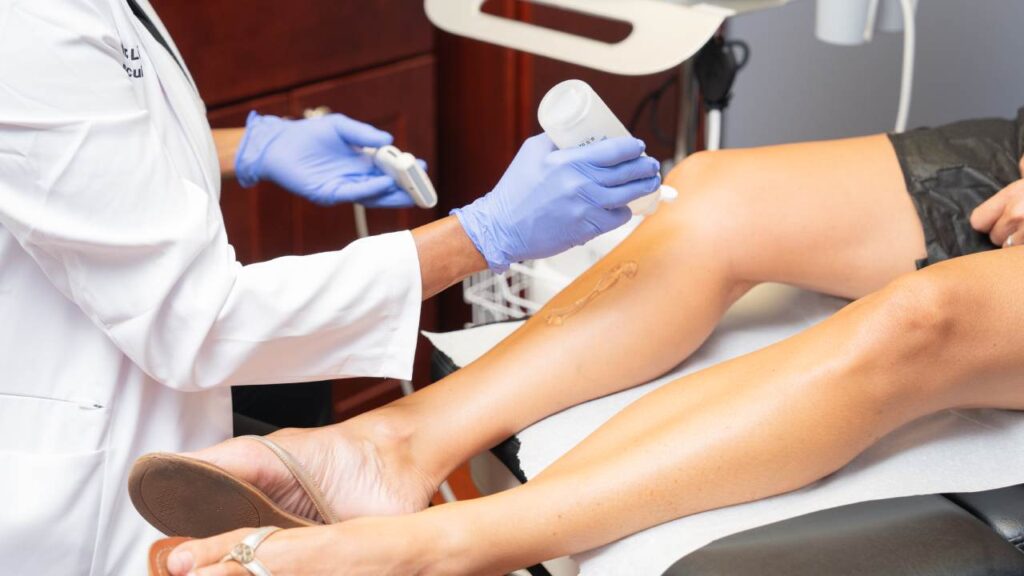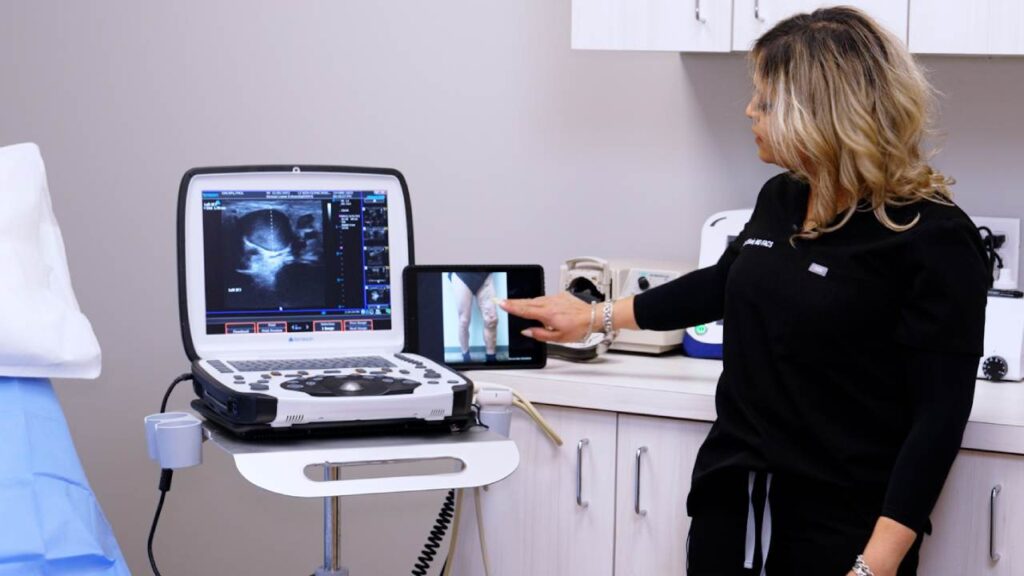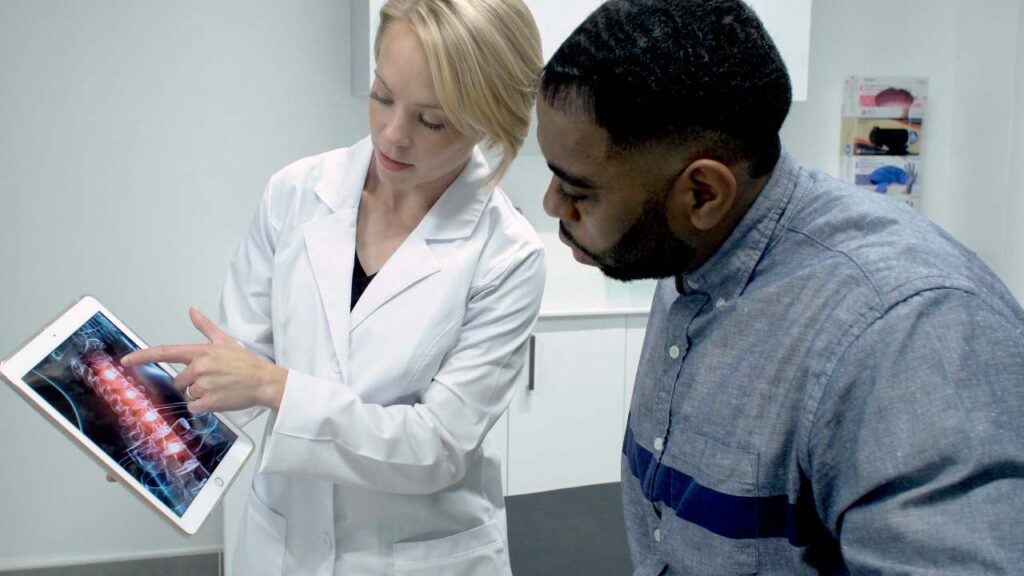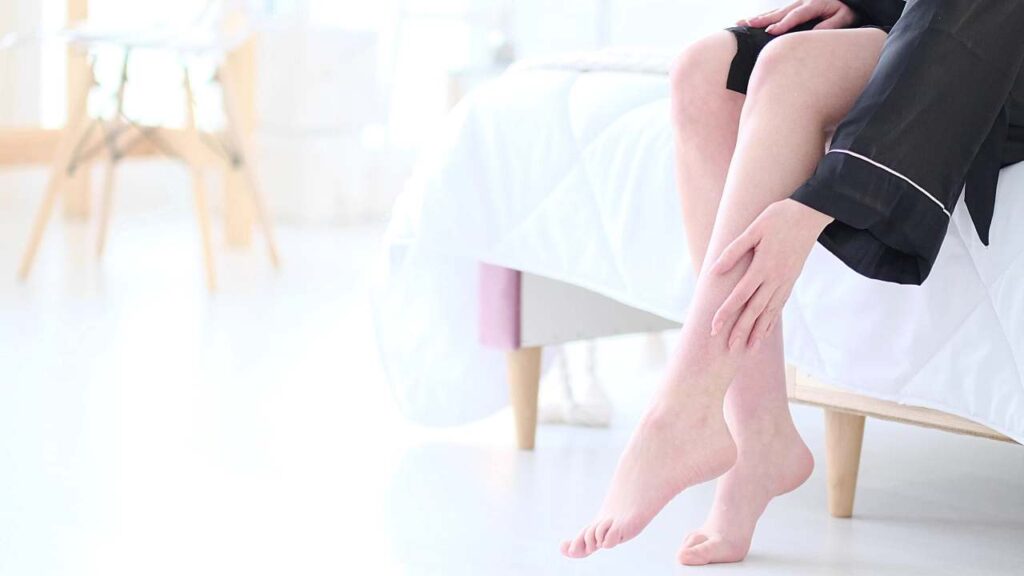What is the Best Treatment for Spider Veins? Find Out Today!
them?” You’re not alone. Spider veins affect millions of people and can be a source of frustration. Whether you’re dealing with discomfort or itching or are simply concerned about the cosmetic appearance of your legs, you’re likely seeking the best solution to get rid of these unsightly veins.
At VIP Medical Group, we understand your concerns and are here to help you find the best treatment for spider veins. With numerous advanced and minimally invasive treatment options, our board-certified vein specialists are well-equipped to guide you toward healthier, vein-free legs. In this article, we’ll walk you through the causes of spider veins, the best available spider vein treatments, and the factors you should consider when choosing the right treatment.
What Causes Spider Veins?
Before diving into treatment options, it’s important to understand what causes spider veins. Spider veins are small, dilated blood vessels that appear just beneath the skin’s surface. They are often red, blue, or purple and resemble a spider’s web, hence the name. While they can appear anywhere on the body, they are most commonly found on the legs and face.
What causes spider veins on legs? There are several causes of spider veins, including:
- Genetics: If your family members have spider veins, you may be more likely to develop them.
- Prolonged Standing or Sitting: If your job requires you to stand or sit for long periods, you may be at a higher risk of developing spider veins.
- Hormonal Changes: Pregnancy and menopause can all cause hormonal fluctuations, which can contribute to spider veins.
- Aging: As we age, the valves in our veins weaken, leading to blood pooling and the formation of spider veins.
Top Treatments for Spider Veins
Now that you understand what causes spider veins, let’s explore the most effective treatments. At VIP Medical Group, we offer a range of minimally invasive spider vein treatments to address spider veins. Here’s a breakdown of the best treatments:
1. Sclerotherapy
Sclerotherapy is one of the most popular and effective treatments for spider veins. During this procedure, a vein specialist injects a solution (usually a saline or foam-based solution) directly into the affected vein. This solution irritates the lining of the vein, causing it to collapse and eventually fade from view. Sclerotherapy is a quick and painless treatment with minimal downtime, making it a great option for those looking for a fast solution.
Benefits:
- Quick procedure (typically 15-30 minutes)
- Little to no downtime
- Effective for small to medium-sized veins
Drawbacks:
- May require multiple sessions
- Mild discomfort at the injection site
2. Endovenous Laser Ablation (EVLA)
Endovenous laser ablation (EVLA) is a cutting-edge treatment that uses laser energy to treat veins from the inside. This method is often used for larger varicose veins, but it can also be effective for spider veins, especially since it can treat the root cause of spider veins and varicose veins — chronic venous insufficiency. The procedure involves inserting a laser fiber into the affected vein, which heats the vein wall and causes it to collapse.
Benefits:
- Minimally invasive
- Suitable for larger veins
- Quick recovery
Drawbacks:
- May cause temporary bruising or swelling
- Requires local anesthesia
3. Radiofrequency Ablation (RFA)
Radiofrequency ablation (RFA) is similar to EVLA, but instead of laser energy, it uses radiofrequency waves to generate heat and collapse the vein. This technique is effective for both spider veins and varicose veins and is often used for patients with chronic venous insufficiency, the root cause of most vein problems.
Benefits:
- Effective for a wide range of vein sizes
- Little to no discomfort
- Long-lasting results
Drawbacks:
- Slight risk of skin discoloration
- Requires compression stockings post-procedure
4. VenaSeal
VenaSeal is a revolutionary procedure that uses a medical adhesive to close off veins. This treatment is ideal for patients who want to avoid using thermal energy or multiple injections. The adhesive is injected into the affected vein, sealing it shut, and blood is rerouted to healthier veins.
Benefits:
- No thermal energy or tumescent anesthesia needed
- Fast recovery
- Minimal discomfort
Drawbacks:
- Not suitable for very small spider veins
- Slightly higher spider vein treatment cost
5. Ambulatory Phlebectomy
Ambulatory phlebectomy is a minimally invasive surgical procedure used to remove small varicose veins and spider veins close to the skin’s surface. This treatment involves making tiny incisions through which the veins are extracted. It’s an outpatient procedure performed under local anesthesia, and the recovery time is relatively short.
Benefits:
- Removes veins permanently
- Immediate results with minimal scarring
- Can be used for larger spider veins or small varicose veins
Drawbacks:
- Mild bruising or swelling post-procedure

6. Compression Therapy
Compression therapy is a non-invasive treatment that involves wearing compression stockings to improve blood flow and prevent the formation of new spider veins. While it doesn’t remove existing spider veins, it helps manage symptoms and can prevent the condition from worsening. Compression stockings are often recommended after treatments like sclerotherapy or ambulatory phlebectomy to aid recovery.
Benefits:
- Non-invasive and easy to use
- Improves blood circulation
- Reduces swelling and discomfort
Drawbacks:
- Does not remove existing spider veins
- Requires daily use for optimal effectiveness
Key Factors to Consider When Choosing a Treatment
When deciding on the best treatment for spider veins, several factors come into play. Here’s what you should consider:
- Severity of Your Spider Veins: If your spider veins are small and primarily cosmetic, treatments like sclerotherapy may be ideal. However, if you have larger veins or underlying issues like venous insufficiency, a more advanced treatment like EVLA may be necessary.
- Your Overall Health: Your vein specialist will assess your overall health to determine the most appropriate treatment. Some procedures may not be suitable for patients with certain health conditions. For example, if you’re prone to blood clots, your doctor may recommend a treatment that minimizes risk.
Spider Vein Treatment Cost: Spider vein removal cost varies depending on the type of procedure, the severity of your condition, and the number of sessions required. While spider veins are often viewed as cosmetic, treatments that address the root cause—such as venous insufficiency—are often covered by insurance. If you are diagnosed with venous insufficiency, your sclerotherapy or other treatments may be covered.
Why Choose VIP Medical Group?
At VIP Medical Group, we provide a variety of cutting-edge, minimally invasive treatments for spider veins. Our board-certified vein specialists will conduct a thorough evaluation, using tools like duplex ultrasound, to diagnose the root cause of your spider veins and create a treatment plan. Most of our treatments are covered by medical insurance, and we offer free insurance verification before your first appointment. We have vein clinics in New York, Long Island, New Jersey, California, and Maryland, ensuring you can find a convenient location near you. Contact us to schedule your consultation and explore your spider vein treatment options today.







